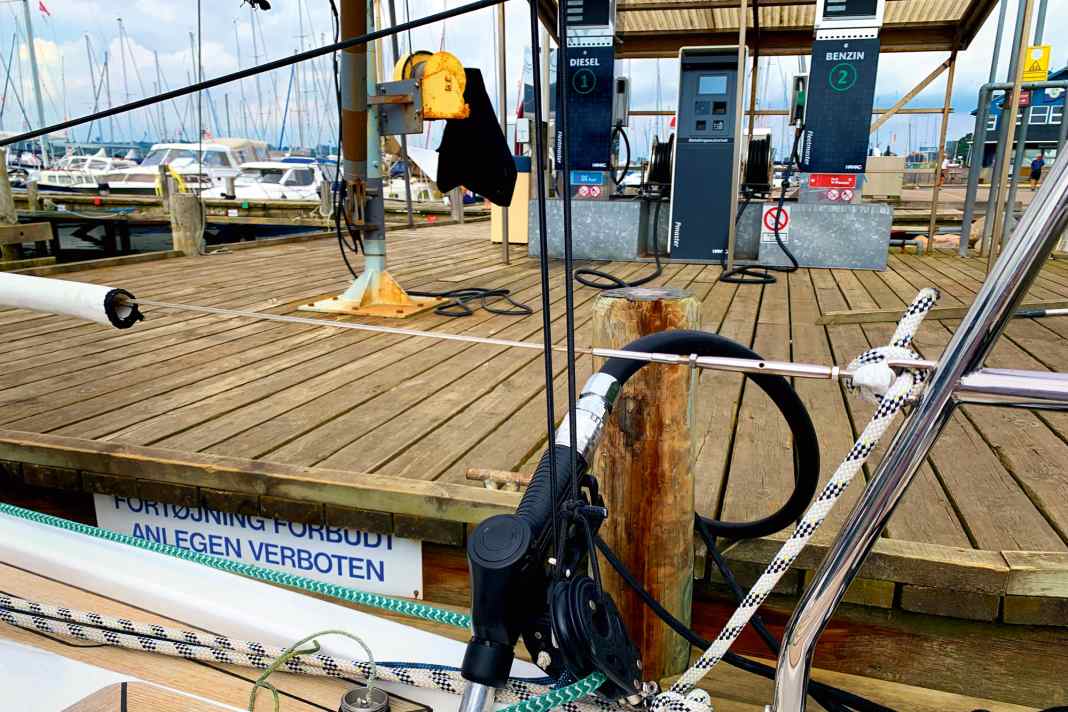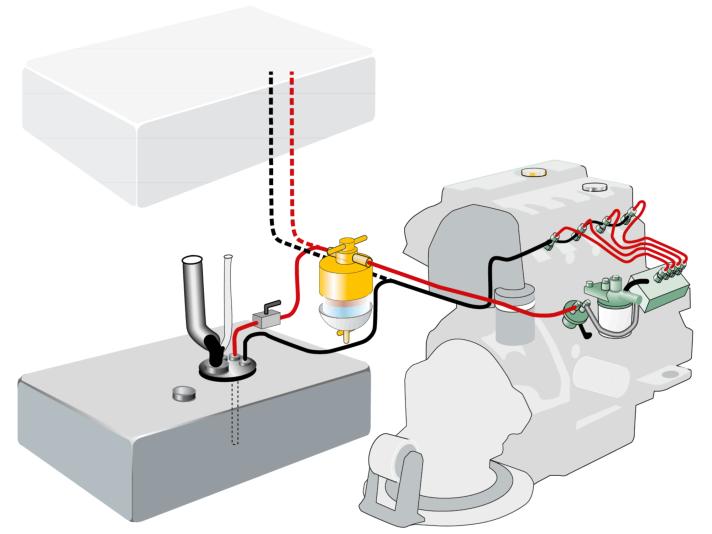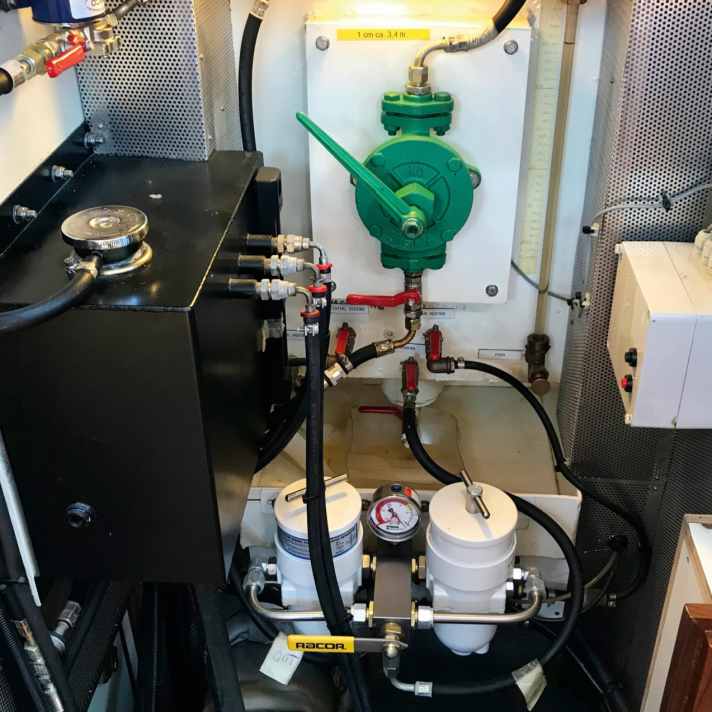Technology: How fuel filters work and how they function to keep things clean






In the centre of the diesel engine: pressure is generated with a stroke in the injection pump. The injection nozzle opens and distributes the diesel finely in the combustion chamber at up to 300 bar. The openings in the nozzle are designed in such a way that there are small and larger droplets. The former burn immediately, the others later. This makes the engine run smoother and prevents knocking. If the injector nozzle wears out and does not close properly, for example, or the spray pattern is no longer correct because the holes have changed, the engine running will also change. The owner will recognise this by the uneven running or usually white smoke from the exhaust. The injection nozzle and injection pump are precision mechanical components with extremely small manufacturing tolerances that move quickly.
It takes little imagination to visualise the damage that even the smallest particles of sand or metal in the fuel, which also lubricates the system, can cause. The same applies to the sticky excretions of bacteria that live in diesel, also known as diesel plague. Equally undesirable in the injection system is water that enters the system as condensation in the tank, through poor fuel or a defective fuel filler cap seal. Water has an unpleasant property in this case: it cannot be compressed. If pressure is applied to the small water droplets in the diesel, as happens in the injection pump, they can collapse and expand abruptly.
Also interesting:
Skippers are familiar with this process from propellers. It is called cavitation. It is actually capable of breaking particles out of metal surfaces, which then cause trouble in the rest of the system. Damage to the injection system is also caused by water in the fuel. Incidentally, this is also undesirable in the combustion chamber for the same reasons. In short, the fuel that finds its way into the injection pump must be absolutely free of impurities and water. Fuel filters are available to protect against such unpleasantness. These are often also equipped with a water separator so that only sufficiently clean fuel ends up in the high-pressure pump. If an engine stops because the fuel filter is clogged, it has indeed paralysed the engine - but most probably also saved it.
Fuel filter is a piece of fleece
A filter like this is actually just a piece of fleece with a defined pore size. Everything that is small enough for the pores can pass through. Everything else sticks to the fleece. A standard pore size for fuel filters is ten micrometres, which is about ten times finer than a human hair. In other words, everything that is defined as fine dust in the air would fit through. This is sufficiently small for the injection systems and does not cause any damage there.
If the pores were made even finer, too little fuel would pass through, as the filter represents an obstacle to the flow of fuel. In order not to reduce the flow rate too much, the surface area of the filter is increased. This means that there are more pores through which the liquid can pass. This is why the filter elements have a fan-shaped design, like an accordion. If a pore is hit by an impurity and it gets stuck, the pore is then impassable for the fuel. The pressure behind the filter element decreases. If this happens with many pores, the fuel filter will eventually become clogged.
Components of the fuel circuit

The tank sits higher or lower than the first filter. This is followed on the way to the engine block by the pre-filter with water separator, feed pump with hand lever, second filter, injection pump, injection nozzles and the return line, also known as the leakage line (black)
To recognise how clogged the filter element is, measure the pressure difference upstream and downstream of the filter, the so-called differential pressure. This allows you to read the condition of the filter element using a pressure gauge on the housing without removing it. The pressure in the fuel system is generated by the feed pump on the engine. It is either electrically operated or its diaphragm is driven by a cam from inside the engine. It should not be confused with the injection pump, which only generates the pressure for the injection, but not the pressure in the fuel system.
Water separator must be drained regularly
While the filter element is responsible for the solid components in the fuel, water in the diesel can easily pass through it. It must therefore be removed by other means. To do this, manufacturers make use of the greater density of water compared to diesel or petrol. Regardless of whether it can simply settle or whether the fuel is fed into a centrifuge, where the heavier water is spun outwards and separated from the diesel: The main thing is that only clean fuel remains.
The separated water collects at the bottom in the so-called bowl below the filter. It is usually easy to see through the sight glass as, unlike the slightly coloured diesel, it is completely clear. If too much water has collected, it must be drained. This can be done via a drain plug provided at the bottom of the filter housing. Unfortunately, there are also water separators without a sight glass, which is a fire resistance requirement from the CE standard that glass cannot fulfil. Here you cannot see whether water has accumulated. You have to tap off regularly at random.
For those who prefer extra convenience, choose a fuel filter with a sensor. It emits a signal, for example to the NMEA 2000 network, when a certain water level is reached in the bowl. The skipper then knows that it is time to drain. The filters from Separ and Racor have a spout at the bottom of the bowl to which a hose can be connected in order to better collect the drained water. The filter should be easily accessible so that the differential pressure in the filter - if a pressure gauge is available - and the water level in the bowl can be checked regularly.
This is also useful for quickly replacing a filter element if the engine breaks down because the fuel is contaminated. By the way: draining some fuel from the bottom of the fuel filter is part of the regular routine in the engine room, certainly if fuel had to be refuelled from a dubious source. This is the case, for example, when refuelling in spring at a boat filling station that has hardly been used over the winter. The fuel is then already several months old and has therefore been able to absorb more condensation.
Carry out venting
Either at regular intervals or because the differential pressure is too high: at some point, the filter element has to be replaced. There are two main systems for this. In one, the filter element is located in a container from above. This is the case with a fuel filter from Separ or Racor, for example, where the bowl-shaped plate is not used to collect fuel. It is intended to protect the filter from heat. Important: Always close the diesel tap on the tank first. Then, to replace the filter, simply remove the cover, take out the old element, insert the new one and screw the cover back on. This can be done almost without spilling any fuel. As almost no diesel is lost, bleeding is also very quick. With Separ, the filter element is pressed into the holder using spring tension. This requires some force to tighten. The four screws of the cover must also be fastened in the correct order so as not to damage the cover.
On a Racor fuel filter, the cover is tightened by hand with a large screw. The other, very widely used filters have the filter element clamped between the lid and the bowl. It is held in place with a long screw that extends from the lid to the bottom of the bowl. The disadvantage: You have to loosen this screw and remove all parts to get to the filter element. In the process, all the fuel runs out of the fuel filter and the element as well as out of the fuel line. A huge mess. This can be reduced by cutting off the top of a plastic bottle. If the resulting container is now pushed over the filter from below, the retaining screw at the top can be loosened and the individual components, including the fuel, fall into the bottle. Then remove the parts still required and clean them well with a lint-free cloth, insert a new filter element, ensure that the seals are seated correctly and screw everything back together properly.
The system must now be bled. The bleed screw, which is always located on the cover of the filter, is important here. Open it one turn so that the air can escape from the system. Now it depends on where the fuel filter is located in relation to the tank. If it is lower than the liquid level in the tank, simply open the fuel tap again and wait until fuel comes out of the bleed screw on top of the filter without bubbles. Then close the screw and you're done. If it is a petrol engine, ensure good ventilation and carefully wipe up all fuel residues. Otherwise there is a risk of fire and explosion!
Troubleshooting during venting
If the filter is higher than the tank, it depends on the fuel feed pump. If this is electric, simply switch on the ignition. The pump should then start to run. Then wait again until fuel comes out of the bleed screw without bubbles. With a mechanical feed pump, there is usually a small lever on the underside of the pump. This can be used to operate the pump. Do this until fuel comes out of the filter. This can take a while. It can also be difficult to pump and check at the filter at the same time whether diesel is already coming out of the vent. If this is the case, you will need help from a second person to close the bleed screw. After bleeding, start the engine and let it run. There may still be air bubbles in the system.
This can be recognised by the fact that the speed keeps dropping or the engine even stops. However, this should stop by itself after a while. By the way: Engines usually have another filter directly in front of the injection pump. This should also be replaced regularly. As the filter element is usually attached to the engine, bleeding can be simplified by filling it with clean(!) fuel before fitting the new filter. It still has to be bled, again using the screw on top of the filter, but this is much quicker.
Advantage: double installation
Some filters are also backwashable. This means that the fuel can flow backwards through them. In this way, the filter element is at least partially cleaned again. This may make it possible to carry out a quick repair at sea if there are no replacement filters on board and the nearest supplier is a long way away.
Keyword replacement. All systems can be designed as dual installations. One or the other filter can then be selected using a ball valve. This has the advantage that it is possible to switch from one filter to the other without losing time if a filter element is dirty and the engine loses power. Of course, this is only a symptom treatment, because if the fuel is contaminated, for example by diesel pest, then the tank needs to be cleaned. This is because the second filter will also soon become clogged if the cause is not eliminated.
Even the best filter is therefore a lost cause against a dirty tank. If cleaning is not possible, for example because the reservoir is out of reach in the keel of the boat, a day tank may be the solution. In any case, skippers should familiarise themselves with the filters if they want to be protected from surprises.
The optimal solution: day tank

Instead of transporting the fuel directly from a possibly contaminated tank through a filter into the machine, another tank can be connected in between. In this case, the diesel is transported from the main tank with a feed pump through a filter with water separator into the day tank. Only filtered and dewatered diesel then reaches this tank. Ideally, the tank is easily accessible and easy to clean through a sufficiently large inspection hatch. The engine then uses this tank, which should already contain clean and water-free fuel, again through a filter with a water separator. This means that clean diesel is always available for the drive. Particularly convenient systems have automatic, level-controlled pumps that fill the intermediate reservoir automatically. This means you only have to make sure there is enough diesel in the main tank. However, the filter between the main and day tank must be checked regularly. As expected, it will often become dirty and separate a lot of water.
Fuelpolisher: clean through circulation
The idea is simple: integrate an additional circuit with a pump and filter into the existing fuel system, which regularly pumps the fuel from the tank through a filter with a water separator. This keeps everything in the tank clean. The company GoFilter has developed such a system. It is installed with solenoid valves in the supply and return lines of the fuel system or, if connections are available, connected directly to the tank. The solenoid valves close the extra circuit as soon as the ignition is activated so that there is always enough diesel or petrol available for propulsion. However, if the ship is stationary, the stored fuel is circulated at regular, programmable intervals. The system's filter ensures that dirt and water remain trapped in it. This significantly increases the service life of the colleague in front of the drive. The cheapest system for diesel tanks up to 800 litres, including Separ-Filter with water sensor, solenoid valves and Siemens PLC, costs from around 5,150 euros.
- More information: gofilter.de

